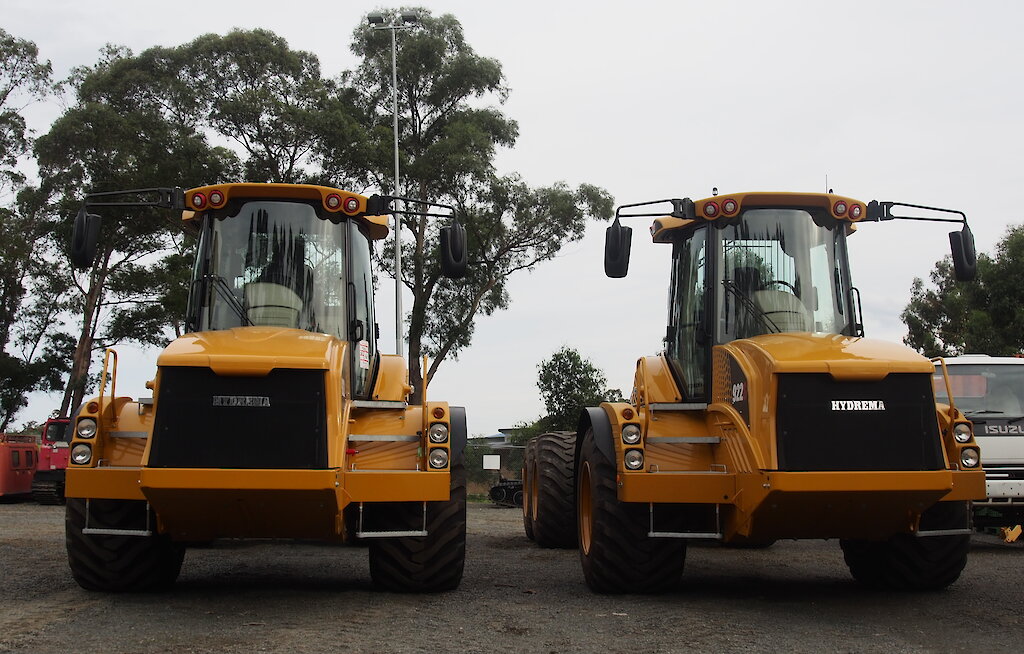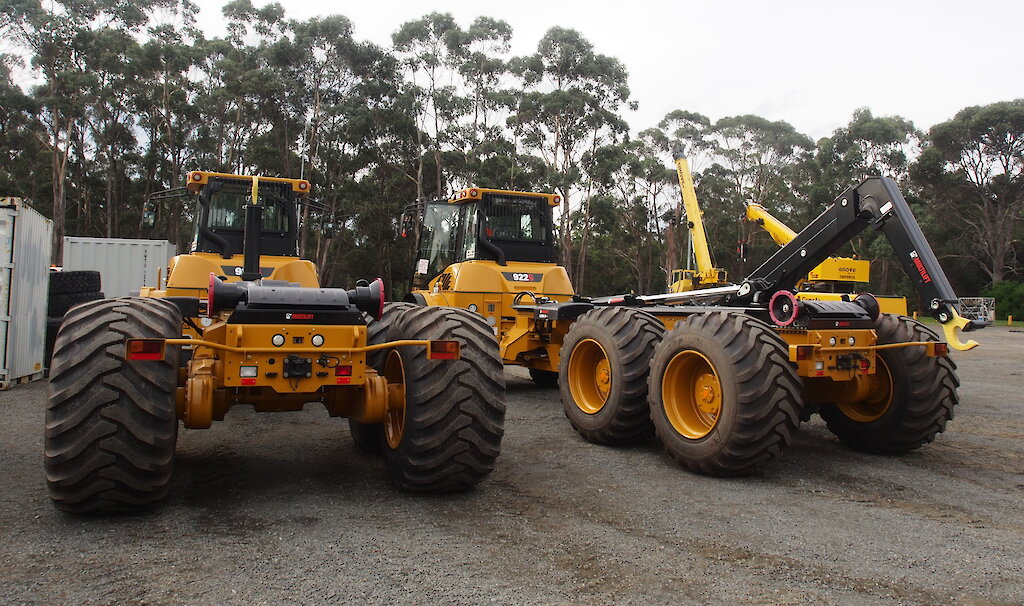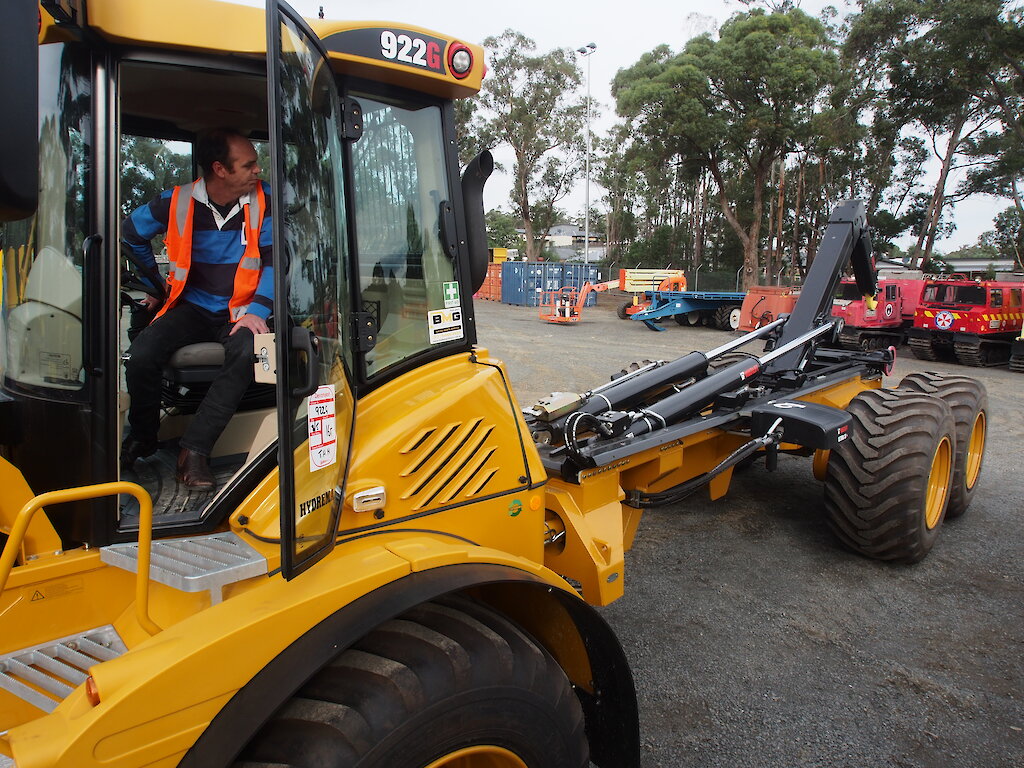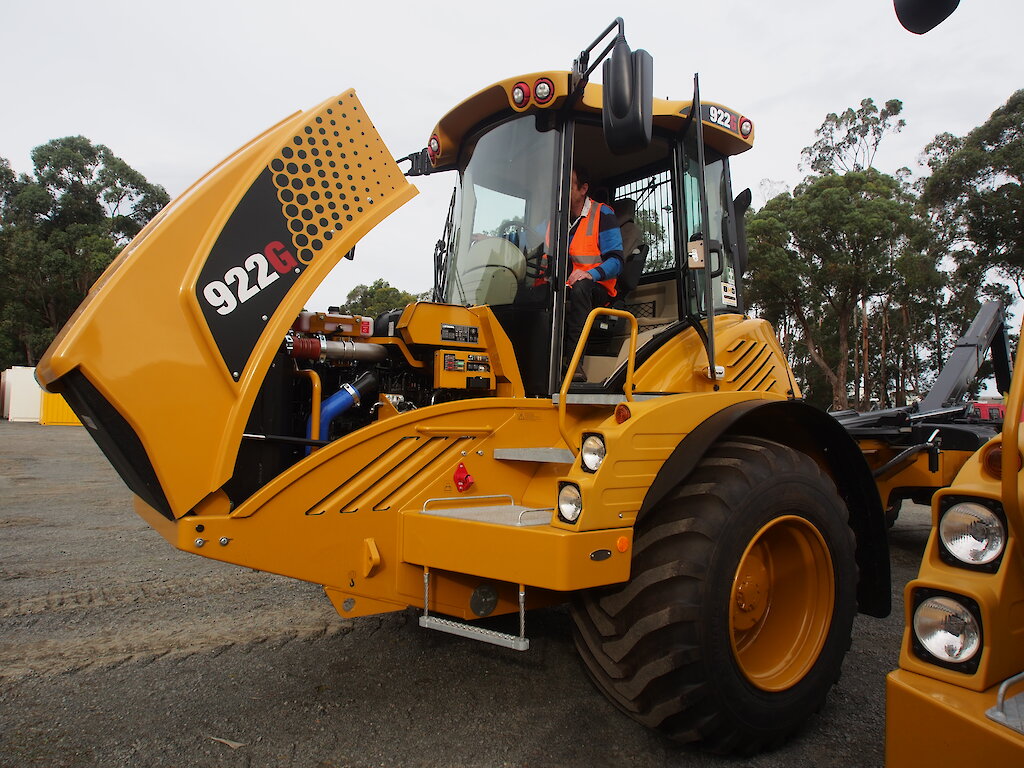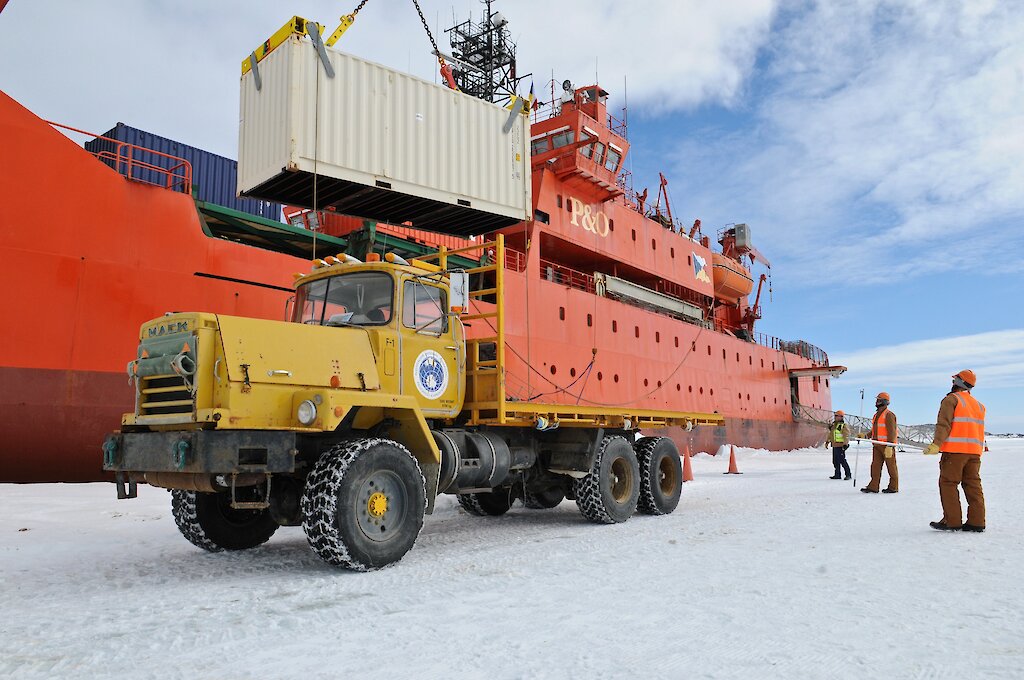Two big yellow tip trucks have joined the Australian Antarctic Division's fleet, to provide a 'roll on, roll off' cargo delivery service from the barges on board Australia's new icebreaker, RSV Nuyina.
At over four metres high, nearly 11 metres long, and with tyres the size of an average human, the Danish Hydrema 922G trucks cut an imposing sight.
But it's not all about looks. Mechanical Supervisor Richard Evans said the trucks provide a lightweight, off-road solution to carting heavy loads across sea ice or up the gravel roads at Australia's Antarctic stations, during resupply.
"These are full off-road articulated dump trucks, but they weigh only 14 tonnes when empty," he said.
"As we operate on a 34 tonne load limit on sea ice, this means we can still carry loads up to 20 tonnes.
"They also have a hydraulic hook lift system to self-load and unload containers."
The trucks will replace two Mack trucks that have been used at Casey and Davis research stations since 1982. Unlike the rigid Mack trucks, the Hydrema trucks are articulated, which means they can easily drive off the Nuyina's barges and up the inclined boat ramps at each station.
From ship to shore, and on to station, the trucks will carry 10 and 20 foot shipping containers, 'break bulk' or oversized cargo, and 10 foot 'isotanks' of aviation fuel. The isotanks will be used by the new deep field traverse and mobile inland station, and to supplement station fuel storage.
Using their hook-lift system, the trucks can self-load and unload, as required, and carry containers back to the ship for return to Australia.
As well as being easy to operate and comfortable - with heated seats, an automatic gear box and electronically controlled suspension - the new trucks also have the advantage of engine "commonality".
"The trucks have a six cylinder Cummins engine, which is the same family of engine used in our Hägglunds, cranes and Terrabus, so maintenance on station will be straightforward," Mr Evans said.
With a top speed of about 40 kilometres per hour, the trucks won't be going anywhere fast. But they're a work horse rather than a race horse.
"Although these are amongst the lightest trucks on the market, they're designed to be worked hard over rough ground, day in day out," Mr Evans said.
The trucks will be modified for Antarctic conditions at the Australian Antarctic Division, with the addition of low temperature oils and fluids, block heaters to pre-heat coolant, and battery heaters.
They'll make their journey south on the first voyage of Nuyina in 2021-22.
19 May 2020
Next steps for proposed Antarctic aerodrome decided

